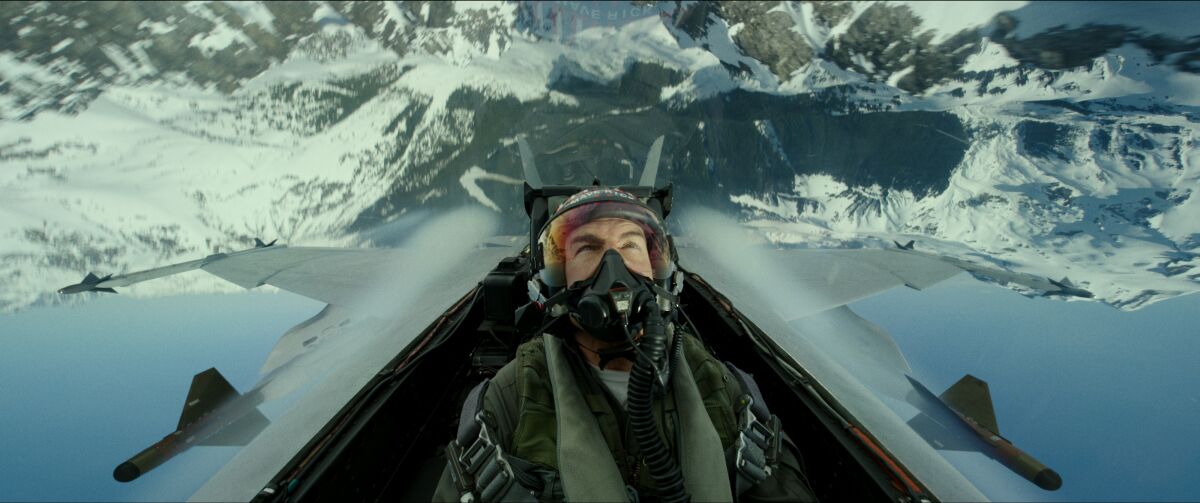
Top Gun Maverick reunites the audience with Pete “Maverick” Mitchell (Tom Cruise) working as a test pilot of an experimental hypersonic jet that is under threat of being replaced by a drone program. In an attempt to prevent that from happening, Maverick attempts to pass a flight test at Mach 10 speed to show that it can meet specifications. His plan goes awry however when the prototype jet is destroyed and Maverick is sent back to “Top Gun” school to train new graduates for a special assignment, including Lieutenant Bradley “Rooster” Bradshaw (Miles Teller), son of Maverick’s late friend and former Top Gun classmate RIO Goose (Anthony Edwards). While teaching, Maverick must confront the ghosts of his past.
For all its technical marvels, Top Gun Maverick is a film that explores humanity, namely our slow collision course with technological advancement. Maverick finds himself a living relic of a past that is slowly dying, a road block for top brass on the path toward full drone warfare without a human component. In showing the triumph of the human spirit and determination, this film gives its audience hope for itself and its own future in our reality, hope that the foretold automated future of the workforce can be staved off, hope that what makes humanity uniquely alive cannot be replaced. In an era where so many are frightful about the future prospects of the nation, a film that displays the ingenuity of people working together toward a common goal is sure to resonate.
In addition to holding onto the old ways of flying, Maverick holds onto the trauma of losing his best friend tragically and the ensuing guilt from being present for his death. This is mostly manifested through his relationship with Rooster, whom he feels a sense of responsibility for and clashes with as a result. Maverick’s failure to let go of the past impedes him just as much as the hands of time and technological progress do, a lesson he is more slow to learn. Overcoming the past and looking toward the future emotionally is juxtaposed perfectly with Top Gun Maverick’s caution about embracing a future without human elements in the military, and elsewhere, when it comes to technology.
These human components are what connects the film to audiences emotionally, past its entertainment value. It’s a key component that many of our bombastic modern blockbusters overlook, which why this film has so impacted audiences and its runaway success has so baffled industry observers. The wonders of a blockbuster’s technical aspects are important, but movies that make people feel are what really reach audiences and make an impact on them. Even the exposition in the film feels organic and builds tension perfectly. The way the concept of the mission at the center of the film aids in establishing tension that keeps the viewer on the edge of their seat. The combination of a humanistic story and groundbreaking stunts and cinematography involving high speed aircraft combine to make Top Gun Maverick an anti-modern blockbuster blockbuster that defied box office expectations.
Image: Paramount Pictures

